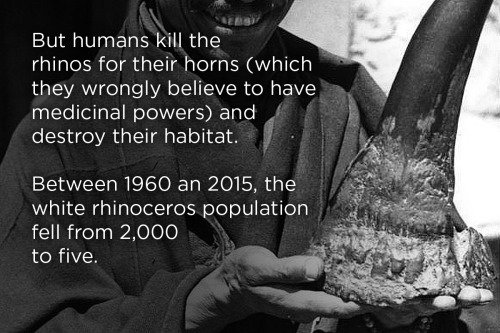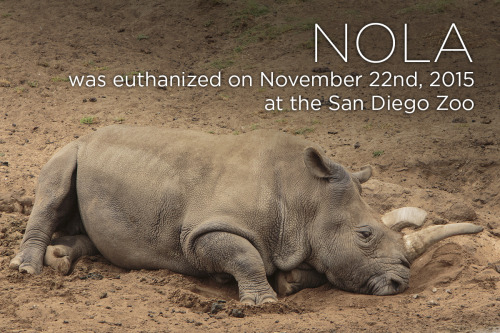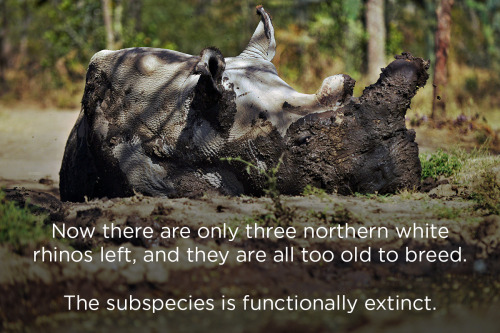Defpuma - Untitled

More Posts from Defpuma and Others


Reflections of Mt Hood | © Photographer | LFST

As we prepare for more cold weather this weekend, let’s take a look back at Sir Ernest Shackleton’s 1914 voyage to the Antarctic. Just one day’s sail from the continent, his ship Endurance became trapped in sea ice. Frozen fast for 10 months, the ship was crushed and destroyed by ice pressure, and the crew was forced to abandon it. After camping on the ice for five months, Shackleton made two open boat journeys, one of which—a treacherous 800-mile ocean crossing to South Georgia Island—is now considered one of the greatest boat journeys in history. Trekking across the mountains of South Georgia, Shackleton reached the island’s remote whaling station, organized a rescue team, and saved all of the men he had left behind.






Nola was born in the southern savanna woodlands of Sudan. In the mid-1970s she was captured to protect her from poachers, and in 1989 she moved to the San Diego Zoo. She shared her enclosure with buffalo, giraffes and gazelles, and enjoyed daily belly scratches.
In 1990, a male rhinoceros named Angalifu joined Nola in San Diego, but she wasn’t interested in him. After hormone treatments, she mated with another male named Saut, but never became pregnant.
Saut died in 2004. Angalifu died last year. Nola was getting older, and suffering from a bacterial infection. Yesterday the zoo announced:
In the last 24 hours, Nola’s condition worsened and we made the difficult decision to euthanize her. We’re absolutely devastated by this loss, but resolved to fight even harder to #EndExtinction.
With the death of Nola this weekend, the northern white rhinoceros inches closer to true extinction. But it became extinct in the wild 2008, and the remaining rhinos have all been to old to breed for several of years. Still, there are plans to resurrect the subspecies using a preserved egg and sperm. The San Diego Zoo’s Institute has pledged $2 million to this difficult project.
And there is reason to be hopeful. A cousin subspecies, the southern white rhino, has seen its population blossom from 20 to 20,000 in the last century thanks to the intervention of humans.
Want to learn more? Check out this article by my friend (and housemate) Sarah Kaplan.
Image credits: Jeff Keaton, Make it Kenya, Ernst Schäfer, Colin P. Groves et al, TONY KARUMBA/AFP/Getty Images




Taking part in a predator study in the Mount Hood National Forest. Got some great pics including blurry picture of an endangered subspecies of Red Fox!



Paleontologists Find 278-Million-Year-Old Amphibian, Reptile Fossils in Brazil
http://www.sci-news.com/paleontology/science-amphibian-reptile-permian-fossils-brazil-03415.html

Penelope.

The “dinosaur bones” that you see on display at the Museum aren’t really bones at all. Through the process of fossilization, ancient animal bones are turned into rock.
Most ancient animals never became fossils. Their carcasses were likely consumed by other organisms, or worn away by wind or water. But sometimes the conditions were right and their remains were preserved. The most common process of fossilization happens when an animal is buried by sediment, such as sand or silt, shortly after it dies. Its bones are protected from rotting by layers of sediment. As its body decomposes all the fleshy parts wear away and only the hard parts, like bones, teeth, and horns, are left behind. Over millions of years, water in the nearby rocks surrounds these hard parts, and minerals in the water replace them, bit by bit. When the minerals have completely replaced the organic tissue, what’s left is a solid rock copy of the original specimen.
Learn more on the Museum’s Dinosaur website.
-
 vintagedaisywitch liked this · 4 months ago
vintagedaisywitch liked this · 4 months ago -
 eternaleffulgence reblogged this · 3 years ago
eternaleffulgence reblogged this · 3 years ago -
 eternaleffulgence liked this · 3 years ago
eternaleffulgence liked this · 3 years ago -
 voodoodal reblogged this · 4 years ago
voodoodal reblogged this · 4 years ago -
 ninjathrowingstork reblogged this · 4 years ago
ninjathrowingstork reblogged this · 4 years ago -
 strangebucket liked this · 4 years ago
strangebucket liked this · 4 years ago -
 lemonfodrizzlecake liked this · 5 years ago
lemonfodrizzlecake liked this · 5 years ago -
 stefdc23 liked this · 5 years ago
stefdc23 liked this · 5 years ago -
 jayinmurderland liked this · 5 years ago
jayinmurderland liked this · 5 years ago -
 teenstevenuniversego liked this · 5 years ago
teenstevenuniversego liked this · 5 years ago -
 anotherside-anotherstory liked this · 5 years ago
anotherside-anotherstory liked this · 5 years ago -
 velvetine-rooster liked this · 5 years ago
velvetine-rooster liked this · 5 years ago -
 twofaced-night reblogged this · 5 years ago
twofaced-night reblogged this · 5 years ago -
 starlightpies liked this · 5 years ago
starlightpies liked this · 5 years ago -
 its--natalia reblogged this · 5 years ago
its--natalia reblogged this · 5 years ago -
 theantisocialghost liked this · 5 years ago
theantisocialghost liked this · 5 years ago -
 modifiedmelody liked this · 6 years ago
modifiedmelody liked this · 6 years ago -
 plantainmami5 reblogged this · 6 years ago
plantainmami5 reblogged this · 6 years ago -
 plantainmami5 liked this · 6 years ago
plantainmami5 liked this · 6 years ago -
 gayonce-knowles liked this · 6 years ago
gayonce-knowles liked this · 6 years ago -
 vanosshqo liked this · 6 years ago
vanosshqo liked this · 6 years ago -
 thunderlad1305 reblogged this · 6 years ago
thunderlad1305 reblogged this · 6 years ago -
 shadowhopenya reblogged this · 6 years ago
shadowhopenya reblogged this · 6 years ago -
 shadowhopenya liked this · 6 years ago
shadowhopenya liked this · 6 years ago -
 ghostly-rowlf liked this · 6 years ago
ghostly-rowlf liked this · 6 years ago -
 spongeson liked this · 6 years ago
spongeson liked this · 6 years ago -
 awonderfulwizard liked this · 6 years ago
awonderfulwizard liked this · 6 years ago -
 yepstillafailure reblogged this · 6 years ago
yepstillafailure reblogged this · 6 years ago -
 yepstillafailure liked this · 6 years ago
yepstillafailure liked this · 6 years ago -
 honeysuckle-bread-knife reblogged this · 6 years ago
honeysuckle-bread-knife reblogged this · 6 years ago -
 honeysuckle-bread-knife liked this · 6 years ago
honeysuckle-bread-knife liked this · 6 years ago -
 biblically-accurate-lesbian reblogged this · 6 years ago
biblically-accurate-lesbian reblogged this · 6 years ago -
 biblically-accurate-lesbian liked this · 6 years ago
biblically-accurate-lesbian liked this · 6 years ago -
 shinyobservationtree reblogged this · 6 years ago
shinyobservationtree reblogged this · 6 years ago -
 shinyobservationtree liked this · 6 years ago
shinyobservationtree liked this · 6 years ago -
 plentyofsoup liked this · 6 years ago
plentyofsoup liked this · 6 years ago -
 ephemeralprince reblogged this · 6 years ago
ephemeralprince reblogged this · 6 years ago -
 ephemeralprince liked this · 6 years ago
ephemeralprince liked this · 6 years ago -
 supercowbarbie liked this · 6 years ago
supercowbarbie liked this · 6 years ago -
 pinkhopelessromantic liked this · 6 years ago
pinkhopelessromantic liked this · 6 years ago -
 championoflight liked this · 6 years ago
championoflight liked this · 6 years ago -
 friendly-mimikyu liked this · 6 years ago
friendly-mimikyu liked this · 6 years ago -
 thehopefulstrangercollector liked this · 6 years ago
thehopefulstrangercollector liked this · 6 years ago